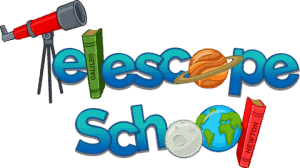You see tons of marketing content, especially around the Holidays. Several brands of telescopes claim to have the best quality, the highest power, higher magnification, excellent software, and or the best price.
Some packaging claims can be accurate, but what are the best features when buying a telescope as a gift for a child, teen, or an adult?
Quick Look Telescope Gift Guide Table
| Manufacture | Series | Model # | Aperture in mm | Age Range | Best Feature | Normal Price | Check Current Price at Amazon |
|---|---|---|---|---|---|---|---|
| Gysker | Travel | AZ 70400 | 70 | 6 - 10 | Phone Adapter | 100 | Learn More |
| Celestron | Astro Master | 21061 | 70 | 8 - 12 | Finder Scope | 120 | Learn More |
| Meade | Infinity | 209006 | 102 | 9 - 14 | Eyepieces | 190 | Learn More |
| Celestron | NexStar | 22097 | 127 | 13 - 18 | Sky Align | 550 | Learn More |
| Orion | StarBlast II | 9250 | 114 | 12 - 18 | Accessories | 250 | Learn More |
| Meade | LightBridge mini | 203002 | 114 | 11 - 16 | Design | 129 | Learn More |
| Celestron | NexStar | 11069 | 203 | 14 - 50 | Star Align | 1200 | Learn More |
| Zhumell | Dobsoian | Z8 | 203 | 18 - 65 | Eyepieces | 450 | Learn More |
| Sky Watcher | GoTo Dob | S11810 | 254 | 19 - 60 | Collapsable | 1350 | Learn More |
NOTE: the holidays and pandemics may have the stock and ship times messed up, best of luck to you!
Well, let’s cut to the chase with you some telescope models that best suit for gifts of varying ages.
Likewise, all of these picks have the Prime two-day shipping. I can’t be the only person that waits to the last minute? So, I hope you enjoy the article.
What Made These Telescopes Make The List
Optical quality, ease of use, and possible accessories that do help in astronomy were the main factors considered for choosing these telescopes. The obvious was shipping duration and cost. We will elaborate more below.
Aperture Size as a Feature
Frequently, people are misled about buying telescopes with huge magnification when, in fact, the aperture is the most crucial factor. High magnification is useless if the optical quality is poor and or the aperture too small. Because the enlarged object will be blurry and faint with no crisp details to be seen.
The amount of light gathered into your telescope is attributed to your aperture. The larger the aperture, the greater the light it brings to your eye.
Typically, a quality 70-mm or 2.8-inches aperture for a refractor telescope is a good telescope. In a reflector style, a 100-mm telescope starts the size aperture to reap benefits from night observation.
In brief, the reflector style has some blockage at the aperture due to its secondary mirror, so the 100mm is about equal to a 70mm refractor. To learn more about the difference of a refractor and a reflector telescope, check out these articles; Refractor, or Reflector, or Dobsonian.
Telescope Mounts the Quick Overview
The telescope mount is one of the features consistently overlooked by most beginners. They tend to forget the importance and function of the mount, ensuring an excellent astronomical observation. Let’s look at your telescope mount.
Main Functions of Telescope Mount
- Provide a sturdy base to eliminate or restrict vibrations. Think of it as an amplified version of you looking through binoculars while somebody else is holding them. The telescope mount is important!
- Also, it enables smooth maneuvering and finite adjusting of your telescope as you try to follow or locate distant objects in the night sky.
Types of Mount
- Alt-azimuth (alt-az) – This is the basic and straightforward mount provided with most entry-level telescopes. It only allows two directional movements – vertical (altitude) and horizontal (azimuth). Very similar to a camera stands tilt and pan motions. A good Alt-Az mount will have fine adjusting knobs.
- Equatorial – This mount requires more set up time by leveling, and aligning to the North pole, (or South pole if below the equator). Once aligned, this mount allows you to locate all objects by declination and right-ascension. Most all equatorial mounts have slow motion knobs. Many have motorized right-ascension to help follow the object over time. This type is preferred when doing astrophotography.
- GoTo – These are computerized motor controlled mounts. Available in either Alt-Az, or Equatorial. The computer needs to be fed the information of time and date along with your geolocation for proper alignment.
Eyepieces Provided with Telescope, Are They any Good?
The eyepiece is actually the part that magnifies the conversion of light collected by the aperture. The quality of the eyepiece is critical to the ability to magnify and allow the image to maintain a crisp undistorted view.
The eyepiece affects the field of view and magnification of your telescope, so it one of the most important things to look at.
Beginner Scope eyepieces provided with a beginner telescope are typically just good enough quality. This helps keep the cost down to be competitive.
Eyepieces are also the quickest way to enhance your viewing experience by upgrading your collection. They are measured by the focal length in millimeters, and the smaller the number, the greater the magnification and narrower the Apparent Field of View AFOV
Other Accessories and Electronic Features
Aside from those factors mentioned, you also should consider accessories and possible electronic control features or software that may come with telescopes.
The accessories you should consider for all types of telescopes are filters, barlows, and finder scopes.
The telescope filter will help you minimize or maximize light, or enhance specific colors for better viewing of say planets. A light pollution filter may become your best friend when trying to view things in the night sky.
Barlow’s are another quick way to enhance your telescope capabilities. A quality 2X or 3X included will give more than a 5X, for example. Many beginner telescopes come with the lessor quality Barlow too. Learn more about Barlow’s here.
Meanwhile, a finder scope is most helpful not just for beginners but also for professional astronomers. Finder scopes help you track and pinpoint specific objects in the sky for observation or astrophotography.
Now, electronic controls and features or software pertain to the computer-driven operations and or maps of the night sky. Preprogrammed software can help you find objects and speed observations.
The software can help you learn observation and tracking skills for viewing. Typically software does not help you while viewing, and a good start map may be better.
Best Telescopes for Kids 12 Years Old and Under
We have three telescopes on the list that suits kid use to start their journey for astronomy. Taking the average young person about 9 to 12 years old. Your 12 year old may be ready for more advanced features, like a GoTo or equatorial mounts.
These telescopes are Gskyer 70mm Travel Scope, Celestron AstroMaster 70mm Refractor, and Meade 102mm AZ. These guys were chosen for the following reasons in this age category.
- It is a refractor, no collimating needed, and a little more rugged than other styles
- Simple Alt-Az mount
- The refractor is less sensitive to light pollution
- Portability, to Grandma’s, camping, or sleepovers
Overall, they are easy, simple to use…just point and view. Plus prices start in under $100
Gskyer Travel Scope 70-mm AZ Mount
Great for Beginners and under $100
What’s Good
Gskyer provides German quality with simple functionality for first-time astronomers and at an affordable price.
For your kids, the assembling process will take around 15 to 30 minutes, and it has a friendly guide that will make it easy for you. You will never have a problem switching lenses with this telescope as it comes straightforward.
Likewise, it uses a rack-and-pinion system for its focus and fine-detail adjustment.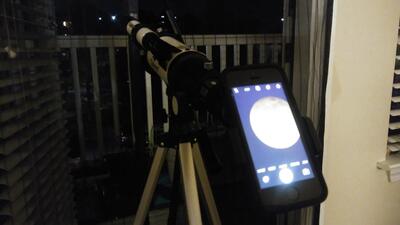
This telescope uses an alt-az mount where it can be smoothly adjusted to follow on the object you are tracking and observing. There is also a smartphone adapter included inside the package with wireless remote camera control.
The overall parts and construction of this model are excellent and durable. Likewise, it comes with a one-year warranty.
What could be better?
Nothing, the price range, and quality fits well.
Celestron AstroMaster 70AZ Refractor
Best for Economical Planetary Viewing
What’s Good
This Celestron AstroMaster Refractor is 70-mm like the Gysker above. Still, it has a longer focal ratio making it better for planets. Thus, meaning higher magnification abilities. It is a good all-around telescope, plus it comes with a red dot finder scope.
Its alt-az mount has excellent construction and smooth adjustment at higher magnifications that significantly elevates the overall experience. It has a panning handle to help you adjust and move its mount to track your desired object smoothly.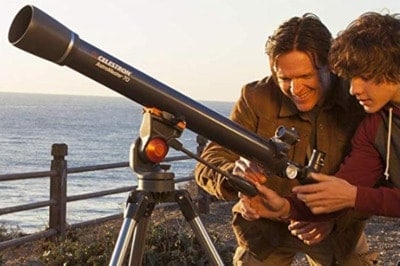
This package includes two 1.25″ eyepiece 20-mm and 10-mm that, when paired with the 70-mm aperture, lets you see a view of the planets like Saturn and Jupiter. You will also have an excellent look at the details of our moon with this telescope.
Moreover, this model provides a free download for astronomical guide and simulation to help beginners get a solid base for their astronomical hobby. The software does not help you while using the telescope, but it does allow some training like when it is raining, and you can’t view it.
Meade 209006 Infinity 102mm AZ Refractor Telescope
Bigger Aperture
What’s Good
The best thing we like from this telescope is its larger aperture of 102mm. The telescope focal length is 600mm, making an F/ratio of 5.9. It is not classified as a travel scope, but it is built like one.
The focal ratio allows easy all-around usage on all objects in the night sky.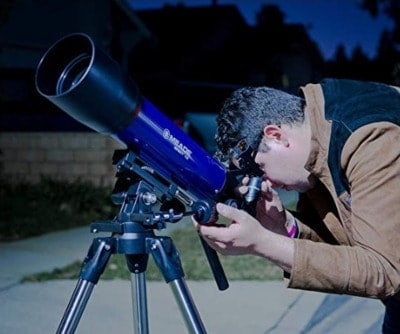
It comes with a red dot finder scope, a diagonal, and 3 eyepieces, plus a 2X Barlow, which makes it like having 6 eyepieces. We also like the durability and smooth adjustment of its mount.
Watch Out For
Make sure you stay with the 90mm or 102mm in this model of Meade telescope. There are other manufacturers in the 70 and 80 size for less, and anything below a 70mm, you may as well just get binoculars. See my article about binoculars.
Best Telescopes for a Teen
Teens are mini-adults or really big kids depending on the phase of the moon, it seems, but seriously, it can be hard to know what to get a teen if they are into space stuff because they seem like both mature and immature at the same time.
These picks of three telescopes made the list because a teen should be more responsible than a 10-year-old and have the wear-with-all to try and satisfy their curiosity.
These telescopes are more complicated to use and set up on their own. However, they are a better telescope to reach out into space and help them solve that curiosity they may have, and all on their own.
Why Are These Following Telescopes Good For a teen?
- A teen has a more considerable undertaking of responsibility
- Should be able to align and collimate a reflector style scope on their own
- Most likely able to set up and program a GoTo telescope
- The ability to figure out an equatorial mount on their own.
- They are portable, or semi-portable
Celestron – NexStar 127SLT Computerized Telescope
Basically, Awesome
What’s Good
The overall quality and performance of this Celestron is great. Celestron has been making Cassegrain telescopes since the 70’s, so they seem to have it down.
Its 127mm aperture Makustov Cassegrain allows for excellent planet viewing. This scope comes with a red dot finder and 2 good eyepieces, a 9mm, and a 25mm too.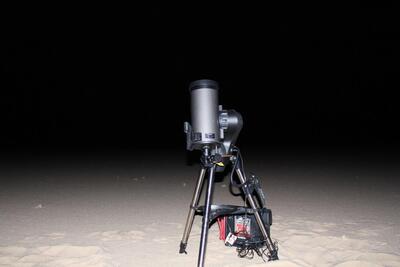
The star alignment technology, once set up and running, allows for quick finding and viewing of over 40,000 objects.
Moreover, its finder scope works without any problem in helping you locate the object to be viewed up in the sky.
What I Wished
I wish the eyepieces were Plossl’s, but adding superb eyepieces and filters to this scope setup over time will increase enjoyment for years to come.
Orion StarBlast II 4.5 EQ Reflector Telescope Kit
The Kit Makes it Stand Apart and Ahead
What’s Good
A good reflector telescope beginner kit. First, it has a carry/ storage case. Plus, it comes with a star map, observer guide, red flashlight, and a 2X Barlow.
Now the telescope is a reflector and needs collimating. Still, it comes with 2 Plossl eyepieces, and combined with the Barlow, it is like having 4 eyepieces.
The manual equatorial mount will allow for hours of excellent viewing. The slow control knobs seem pretty good, so you may even be able to take astrophotography images and use stack software to create good photos.
Its 4.5” aperture allows a good bit of light in making it a great all-around telescope for the cosmos.
Watch Out For
Watch out for light pollution. Check out How Dark is the Sky Above You to see how dark the sky is above where this scope will be. Reflector telescopes are a little more sensitive to light pollution than refractor scopes.
Meade Instruments LightBridge Mini 114 Telescope
Great for Younger teens
What’s Good
For a price under $150, this Meade 114mm reflector tabletop scope is the simplest out of the teen picks. It comes with good quality 1.25” eyepieces, a 9mm and 26mm. The f-ratio makes it a very fast scope at an F/3.9.
A fast scope means it is better suited for deep space objects than planetary. Good planetary views may require adding a shorty Barlow in the future.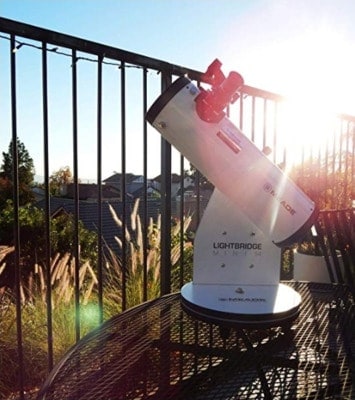
Other than the collimating, you just set it on a picnic table, or any flat surface and point and view. The red dot finder allows for pretty quick finding. It is compact and lightweight, basically 11lbs for possible portability and storage.
Where it misses
The focuser is a little in the lacking and can allow wobble, which makes views with the 9mm hard to see. Take time to make sure the screws are correctly fastened?
Best Adult Telescopes for Gift Giving
While all the telescopes on the list can technically apply to most adults, we separated these telescopes out for adults due to the
Best telescope to invest for their astronomical hobby and adventure, here are our top three best adult telescopes. In choosing these telescopes, we have considered its optic system, mount, electronic features, if any, construction, and cost.
Celestron NexStar 8SE Computerized Telescope
Legendary Performance
What’s Good
If you want a hassle-free, automatic, and accurate computer-driven telescope, this Celestron NexStar BSE is your top choice. The cost is a bit pricey, but when you try to look into its modern features, you would say it is just reasonable.
The main highlight for this model is its database of 40,000 celestial objects and its GoTo mount, which is computer-driven in accurately tracking those target objects. For adults that are new to astronomy, this machine can be a good spoiler just to familiarize yourself with astronomy.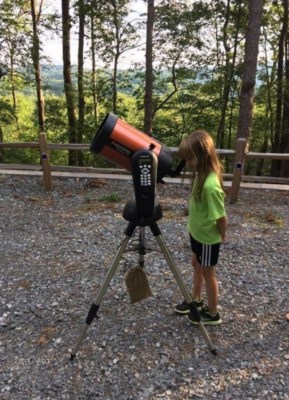
The main thing about this telescope is its 8″ aperture, which gathers sufficient light to get a crisp view of deep space objects. Likewise, this optic system enables you to enjoy the fine details of many planets and the Moon.
Moreover, it comes with free software about astronomy for educational purposes, and its warranty service is reliable. Overall, it is an excellent telescope for adults.
What Could Be Better
You should spring for a power adapter. The eyepieces could be improved to enhance your viewing experience, as well.
Zhumell Z8 Deluxe Dobsonian Reflector Telescope
The Affordable Lifetime Scope
What We Like
Either you’re upgrading your scope, or it is your first telescope, this Zhumell 8″ Dob can be your perfect tool for the starry night. Its price is reasonable under $500 for the overall quality, construction, and optic system of this model.
Its aperture enables you to see planets like the moons of Jupiter and rings of Saturn. The Z8 does great on faint deep space objects, as well.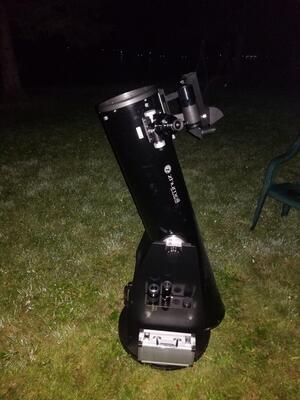
It has a two Plossl 4-element 1.25” eyepiece 9mm and a 30mm wide-field 2″ eyepiece. Its Dob mount is sturdy, and construction is seamless. The Crayford focuser also works as expected in helping you fine-tune a crisp image.
Rugged enough for years of use and hauling to dark skies.
What I Don’t Like
Some shipping mess-ups happen because it comes in 2 boxes. Further, you need to have the correct size vehicle or a home where dark skies are available. Learn more about How Dark Your Skies Are
SkyWatcher S11810 GoTo Collapsible Dobsonian 10-Inch
Only Size Could Improve This
What’s Good
It’s GoTo, it collapses for secure storage, this 10″ SkyWatcher Dob could end up being your best friend. The 2 inches of an upgrade from an 8″ dob actually allows 50% (rounded) more light in the aperture. Which means better images and crisper views.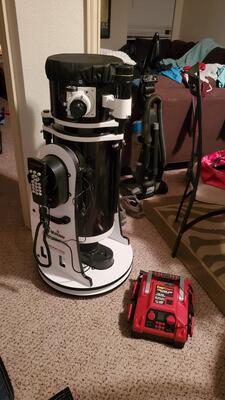
Its 4-element Plossl eyepieces (10-mm and 25-mm) have good quality and magnify an object to an excellent scale. Likewise, the collapsible mount of this Dob proves useful in minimizing space occupancy. Similar to other Dobs, it is simple to operate and takes a little less space when hauling around.
What I wished
I wished the GoTo tracking ability may not be smooth, depending on the tension. Also, the image in the view will rotate as it tracks, leaving astrophotography at bay. To do astrophotography, you would need a good stacking software to stack the images to create brighter color and crispness.
What to Double Check for When Ordering
Well, you have made it to the end, and I hope it was informative in some fashion. As a reminder, we chose the telescopes due to their shipping time (2Day Prime from Amazon), and the quality of craftsmanship.
When I was a kid, the telescope I received was disappointing because it bragged high magnification but did not have the quality to support that magnification. It showed Jupiter’s Red Spot and Saturns Rings on the box, but all I could see was the moon.
Stargazing is an educational hobby, and the telescopes picked were picked to make sure they would not be a disappointment to the gift recipient. Further, these scopes are expandable and able one to improve on them with simple add on things that would be like getting a whole new telescope.
So there are tons of quality telescopes that may not be on this list, but as you shop, just add them to your cart while you compare the features that benefit you!
Again, the necessary features you need to check on are the following to get the most out of your telescope.
- Aperture Size – The bigger, the better
- Eyepiece – Several sizes in a range that is not in a Barlow magnifier window
- Mount – Alt-Az is simple, Equatorial, and GoTo require setup time
- Magnification – Learn your useful magnification of what your leaning towards buying
- Price – Most of you got this figured out!
- Onboard accessories –The accessories included; really needed? Check them out
- Electronic controls – Is it a popular brand, are parts available years from now?
Need More?
We hope you had an insightful time reading through the article and your quest for finding the best telescope for your special someone.
Buying a gift can be a daunting task, and there is a bunch of articles here that help explain aspects that we didn’t dive deep into here. So, here is a list of articles that you may want to look at to help make your telescope purchasing decision.
What a Barlow Lens Means and Does
What the F/ratio Means in Telescope Talk
Are Computerized GoTo Telescopes Worth the Price?
